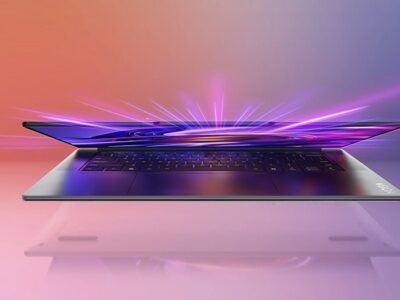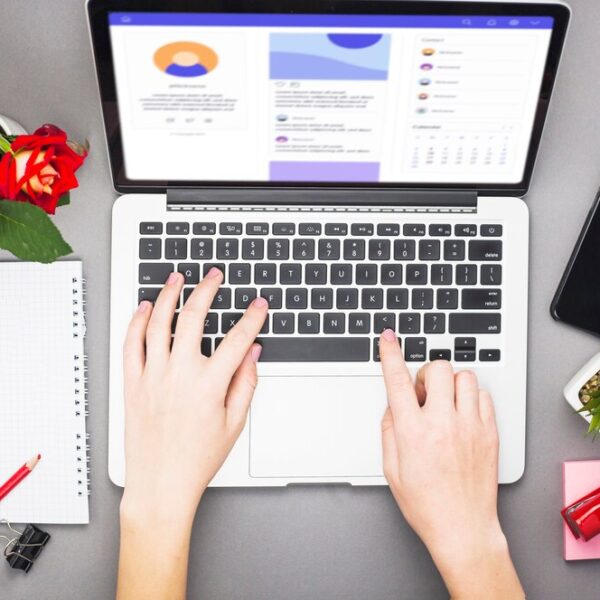
As the workforce shifts towards remote and hybrid models, businesses face the challenge of ensuring that employees remain productive and engaged, even when working from home. Managing the performance and productivity of remote employees can be more complex than traditional in-office oversight. Fortunately, employee performance tracking, combined with remote employee productivity monitoring, offers organizations the tools and insights needed to maintain high performance levels across their teams.
In this article, we’ll explore the role of employee performance tracker, the benefits of employees’ performance monitoring, and how businesses can implement effective remote productivity monitoring systems to optimize efficiency.
The Importance of Employee Performance Tracking
Employee performance tracking refers to the ongoing process of monitoring, evaluating, and enhancing the performance of employees within an organization. It involves using various metrics and tools to assess productivity, work quality, task completion, and overall contribution to organizational goals. Performance tracking is critical for managing both individual and team outcomes and is essential in remote work environments, where employees may not be under direct supervision.
1. Accountability and Transparency
Performance tracking encourages a culture of accountability. When employees are aware that their work is being monitored, they are more likely to remain focused and meet deadlines. Transparency in tracking performance metrics allows both employees and managers to have a clear understanding of expectations and achievements.
2. Increased Productivity
When employees are regularly evaluated on their performance, they tend to stay more productive. By setting clear goals and monitoring progress, organizations can ensure employees are working efficiently and effectively.
3. Identification of Strengths and Weaknesses
Tracking performance provides a wealth of data that can be used to identify employees’ strengths and areas where they may need additional support or training. This helps businesses allocate resources more effectively and tailor development opportunities to individual employees.
4. Enhanced Employee Engagement
Employees who are engaged in their work are more likely to perform at a higher level. By tracking performance, managers can provide feedback and recognition for achievements, which fosters a sense of accomplishment and motivation among employees.
Features of an Effective Employee Performance Tracker
To optimize employee performance, businesses must implement tracking tools that provide comprehensive data and insights. Below are some essential features to consider when selecting an employee performance tracker:
1. Real-Time Monitoring
Performance tracking systems should offer real-time updates on employee activities, allowing managers to monitor productivity as tasks are being completed. Real-time data helps managers address issues promptly, prevent delays, and keep projects on schedule.
2. Task and Goal Tracking
An employee performance tracker should enable managers to set specific tasks and goals for each employee and monitor their progress. This feature helps employees stay on track and ensures that they are contributing to larger organizational objectives.
3. Time Management Insights
Time management is a crucial element of employee performance. A good tracker should provide insights into how employees are allocating their time across different tasks. This data can be used to identify inefficiencies and help employees optimize their work schedules.
4. Productivity Analytics
Comprehensive performance trackers offer detailed productivity analytics that highlight key performance indicators (KPIs). These metrics can include task completion rates, time spent on tasks, and overall productivity levels. Productivity analytics help managers identify top performers and areas for improvement.
5. Performance Feedback Mechanisms
An effective performance tracker should facilitate two-way communication between managers and employees. It should allow managers to provide regular feedback and offer employees the opportunity to discuss their progress or challenges. Continuous feedback helps employees improve their performance and align with company goals.
6. Collaboration and Communication Tools
In a remote work environment, collaboration and communication are key to maintaining productivity. Performance tracking tools should integrate with communication platforms, enabling seamless interaction between team members and managers. This ensures that employees stay connected and can seek support when needed.
7. Customizable Reports
Every organization has different performance metrics and KPIs that they value. A performance tracker should offer customizable reports that allow managers to generate data tailored to their specific needs. These reports can be used for performance reviews, productivity evaluations, and team performance analysis.
Remote Employee Productivity Monitoring
With remote work becoming a permanent fixture for many organizations, tracking the productivity of remote employees has become increasingly important. Remote employee productivity monitoring involves the use of digital tools to track how employees are performing in a virtual environment. This helps ensure that employees are staying on task, meeting deadlines, and contributing effectively to team projects, even when working from home.
1. Time Tracking for Remote Employees
One of the primary features of remote productivity monitoring is time tracking. This tool helps businesses monitor how much time remote employees are spending on specific tasks and projects. Time tracking helps employees manage their schedules more efficiently and ensures that they remain productive throughout the workday.
2. Task Management Tools for Remote Teams
Task management tools are essential for monitoring remote employees. These tools allow managers to assign tasks, set deadlines, and monitor progress in real-time. Task management systems also provide employees with clear visibility into their workload and help them prioritize tasks based on importance and deadlines.
3. Monitoring Work Output
Monitoring the work output of remote employees is crucial for evaluating productivity. Performance tracking tools should provide data on the number of tasks completed, quality of work, and overall contribution to team projects. This ensures that employees are meeting performance expectations, regardless of their location.
4. Screen Recording and Activity Monitoring
Some productivity monitoring tools include screen recording and activity monitoring features, which track the websites and applications employees use during work hours. This helps managers identify time-wasting activities and ensure that employees are staying focused on work-related tasks.
5. Employee Self-Reporting
Many performance monitoring systems include self-reporting features, where employees can log their tasks, report on progress, and track their own productivity. This empowers employees to take ownership of their performance and provides managers with valuable insights into how employees view their productivity levels.
Benefits of Remote Employee Productivity Monitoring
Effective remote employee productivity monitoring provides several benefits for businesses that operate in a remote or hybrid environment. Here are some of the key advantages:
1. Ensures Accountability
Remote productivity monitoring holds employees accountable for their work. By tracking progress, time spent on tasks, and work output, managers can ensure that employees are meeting their responsibilities, even when working from home.
2. Improves Communication
Performance monitoring tools often include communication and collaboration features that help remote employees stay connected with their teams and managers. Improved communication leads to better collaboration and more efficient task completion.
3. Data-Driven Decision Making
Remote productivity monitoring provides data that can be used to make informed decisions about workload distribution, resource allocation, and team performance. This helps businesses optimize their operations and ensures that employees are working efficiently.
4. Boosts Productivity
By tracking time, tasks, and performance, businesses can identify areas where employees may be struggling and provide support to help them stay productive. Productivity monitoring also encourages employees to stay focused and manage their time effectively.
5. Supports Performance Reviews
Remote employee productivity monitoring provides concrete data that can be used during performance reviews. Managers can use this data to evaluate employee performance, identify top performers, and address areas where improvement is needed.
Key Features of ProHance’s Employee Performance Monitoring Tools
ProHance offers a robust suite of employee performance monitoring tools designed to help businesses track and optimize productivity, even in remote work environments. With ProHance, businesses can gain real-time insights into employee activities, monitor progress, and improve overall performance.
1. Task and Time Tracking
ProHance provides advanced task and time tracking features that allow managers to monitor how much time employees are spending on specific tasks and projects. This data helps businesses ensure that remote employees are managing their time effectively and contributing to team objectives.
2. Comprehensive Productivity Analytics
ProHance’s productivity analytics tools offer detailed insights into employee performance, including task completion rates, time management, and work output. These analytics help businesses identify top performers and provide additional support where needed.
3. Real-Time Activity Monitoring
ProHance enables real-time activity monitoring, giving managers visibility into how employees are spending their time during work hours. This feature ensures that employees are staying focused on work-related tasks and helps reduce time-wasting activities.
4. Customizable Reports
ProHance offers customizable reporting features that allow managers to generate performance reports based on specific metrics and KPIs. These reports provide valuable insights into employee and team performance and can be used for performance evaluations and reviews.
5. Collaboration and Communication Tools
ProHance integrates with popular communication platforms, making it easier for remote employees to stay connected and collaborate with their teams. This ensures that employees have the tools they need to work efficiently, even when working from home.
Conclusion
In today’s dynamic work environment, employee performance tracking and remote productivity monitoring are critical to ensuring that businesses remain productive and competitive. With the right tools, businesses can track employee performance, monitor remote productivity, and make data-driven decisions that optimize overall efficiency.
By implementing comprehensive performance tracking solutions like ProHance, businesses can gain real-time insights into employee activities, boost productivity, and foster a culture of accountability. Whether employees are working in the office or remotely, effective performance monitoring helps organizations achieve their goals and drive success.








